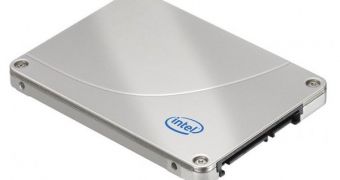SSD caching may not be particularly widespread yet, but it is only a matter of time before it turns common if Intel has anything to say about it, and it does.
The Santa Clara, California-based company has introduced the 313 series of solid state drives, based on single-level cell (SLC) NAND Flash chips.
They aren't the sort of storage units that people should look for when trying to decide what their primary storage device should be.
After all, while the NAND type grants them a high endurance, the storage capacities are quite small.
To be specific, one of them boasts 20 GB, while the other has 24 GB.
For those wondering why Intel would bother coming up with such SSDs, the answer is Intel Smart Response Technology.
As a SSD caching solution, it lets a system view the SSD and the HDD as a single entity, which brings together the speed of the former and the capacity of the latter.
Of course, the newcomers should work just fine with other SSD caching technologies too.
That said, the Intel Rapid Start and Smart Response technologies together are bound to make everything run even more smoothly than otherwise possible.
Just make sure the PC has as much RAM as there is free space on the SSD after the whole SSD/HDD “merger”.
To skip over long-drawn explanations about drive partitioning and reserved capacity, get the 20GB drive if you have 4 GB RAM and the 24 GB one if you have 8 GB.
Performance-wise, the 20 GB 313 SSD has 220 MB/s read and 100 MB/s write speeds, while the 24 GB one works at 160 MB/s and 115 MB/s, respectively.
Finally, the 4K random seek performance is of 36,000 IOPS / 3,300 IOPS vs. 33,000 IOPS / 4,000 IOPS.
Ultrabooks powered by Ivy Bridge CPUs are bound to make liberal use of this 25nm-based duo. Intel says so.

 14 DAY TRIAL //
14 DAY TRIAL //